Content of the article:
- Requirements for fireworks photos
- Camera / smartphone
- a mini tripod helps
- Align the phone
- The right settings
- Better Pro mode than Fireworks mode
- Enable RAW recording
- The right shutter speed
- Lowest ISO sensitivity
- Manual focus on infinity
- White balance on daylight
- The right timing is decisive!
- Avoid blurring despite the tripod
- No manual mode: what now?
1. Requirements for fireworks photos
1.1 Camera / smartphone
First of all, of course, you need your smartphone. Alternatively, you can of course also implement these tips with your digital camera. Most Android smartphones offer a Pro mode in which you can manually adjust focus, exposure time and ISO sensitivity. In combination with the ever better image quality, your smartphone is well equipped for successful fireworks photos.
This photo was taken with the ancient OnePlus 5 in manual mode. The exposure time was four seconds, the sensitivity ISO 100. In the absence of a tripod, I simply pressed the smartphone firmly to a window pane. / © NextPit
Your smartphone (iPhone, * cough *) has no manual mode? Try the Filmic Firstlight app (Android / iOS) or one of the other alternative camera apps from this article, for example.
Many current smartphones also offer more or less useful modes for long exposures, for example the Google Pixel 6 and Pixel 6 Pro, many Honor and Huawei smartphones or the current iPhone models.
1.2 A mini tripod helps
I would also highly recommend a simple tripod. Because with the required shutter speed of several seconds, it is no longer possible to take sharp photos even with the calmest hands. In an emergency, you can lean your smartphone against something or clamp it in as a makeshift, but then you don’t have full flexibility when it comes to the image section.
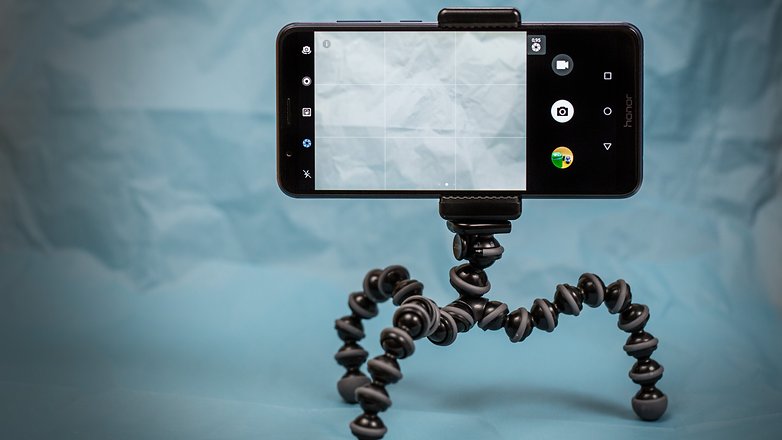
A tripod is of great help for long exposures. When it is very windy, however, light tripods quickly reach their limits. / © NextPit
The GorillaPod from Joby is an absolute classic among flexible and portable tripods:
Joby GorillaPod Mini Mobile
1.3 Align the smartphone correctly
When aligning the smartphone, it is very important: Make sure that you leave the fireworks a little too much space than too little space in the picture. In the times of ultra-high-resolution smartphone cameras, you can still crop the photo later.
I also recommend that you always include some landscape, for example a few buildings in the foreground, a hill or a tree. This is how you put the fireworks into context. If you manage to bring a surface of water (or other reflective things) between you and the fireworks, you will be rewarded with spectacular reflections. Even a puddle can look spectacular.
2. The correct recording settings
2.1 Better Pro mode than Fireworks mode
Some smartphones and third-party camera apps offer special modes for fireworks or long exposures that more or less activate the settings suggested by us in this article. Sometimes they even stabilize the image during the recording and thus want to make tripods superfluous. But does it really work?
The first problem is that the cameras here only deliver JPEG images with limited editing options. And if the results do not meet your expectations, you will hardly have any options for correction afterwards. I would therefore recommend that you take photos in manual mode or Pro mode, which offers many setting options.
You are not in the mood for the pro mode? Then jump to the corresponding section in the article: No manual mode: What now?

Most current smartphones offer a Pro mode with manual setting options. / © NextPit
2.2 Activate RAW recording
Even if this is usually the case in Pro mode, you should make sure that the HDR mode is switched off and the RAW mode is activated. The HDR mode tends to create ghost images with moving subjects, and RAW images offer significantly greater color depth and better dynamics. In order to exploit the full potential, however, you have to edit the RAW files with a special app or software.
In our list of the best photo editing apps for Android and iOS you will find several options that also support RAW photos.
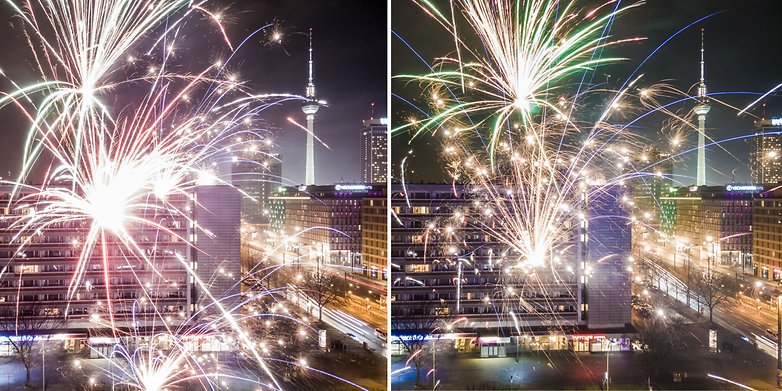
With these rockets, I was glad that there was a pane of glass between me and the fireworks. The settings here in manual mode were four seconds exposure time and ISO 100. / © NextPit
2.3 The correct shutter speed
In the Pro mode of your smartphone you will be confronted with a multitude of parameters. The shutter speed is crucial here. It determines how many effects are ultimately to be seen in the photo. With a very short shutter speed you will only see individual points of the fireworks in the picture. Only exposure times in the range from one second to several seconds create beautiful light trails.
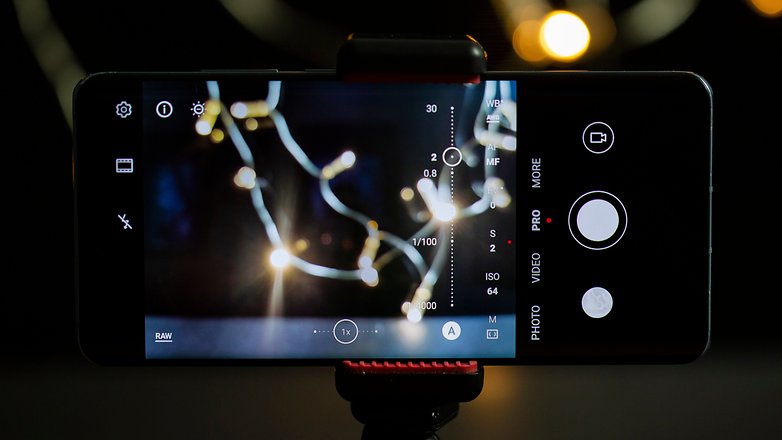
The shutter speed is typically marked with “S” (for speed) in manual mode. Values between one and eight seconds are usually useful for fireworks. / © NextPit
However, there is also a sensible upper limit here: shutter speeds that are too long result in a photo overloaded with light trails. Exposure times between one and eight seconds usually deliver beautiful results.
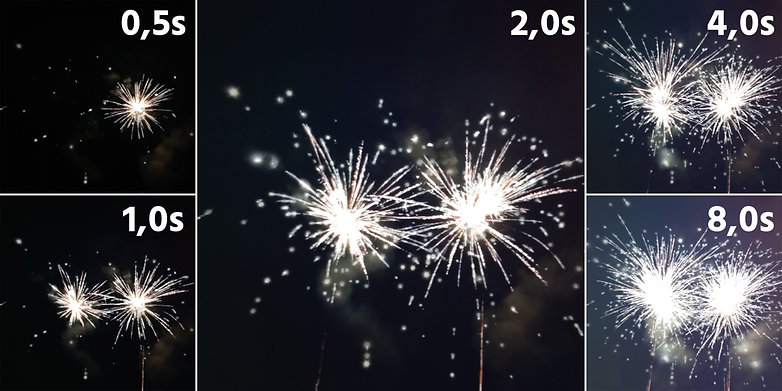
Golden mean: Here you can see what one and the same fireworks sequence looks like with different shutter speeds. We have simply photographed a video on the screen in order to be able to show you the effects of different exposure times on the same effect. / © NextPit
2.4 Lowest ISO sensitivity
The ISO value determines how sensitive the camera sensor is to be read. Here you should set the lowest value that the smartphone offers. Usually this is ISO 50 or ISO 100, but choose an even lower value if possible. The light effects are very bright and are otherwise completely outshone. If you have a smartphone with an iris diaphragm like the Samsung Galaxy S10, then set the f-number to the highest possible value, in this case to F2.4. For cameras with an iris, F8.0 is usually a good value.

Low ISO sensitivities result in low-noise photos. At the same time, they prevent photos from overexposing with long exposure times. / © NextPit
If you are really fancy, you can limit the amount of light entering the lens with the help of a special ND filter for smartphones:
Zomei variable ND filters for smartphones
2.5 Manual focus on infinity
The next aspect concerns the focus, which you can also set manually in the Pro modes. Sets this to the setting “infinite”, often also indicated by a mountain. This ensures that the camera app is focused on distant subjects for every photo. Just don’t forget to undo this setting after taking the fireworks photos, otherwise portraits, for example, will all be out of focus.
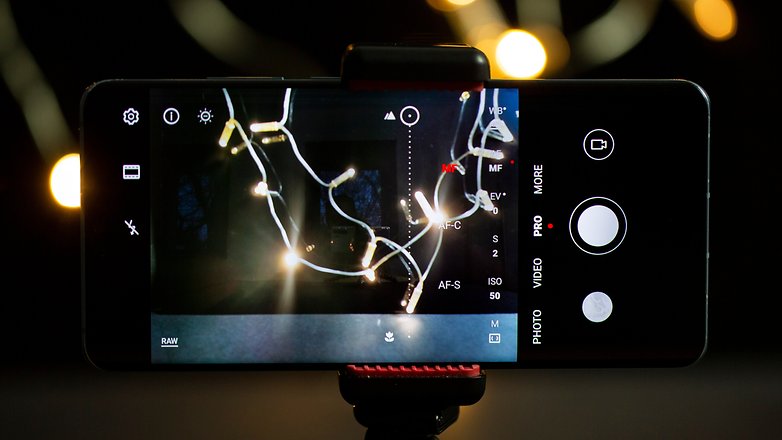
“MF” stands for
Moth … “Manual focus”. The small mountain symbolizes that the focus is on distant motifs – just right for fireworks. / © NextPit
2.6 White balance in daylight
I would also recommend a manual setting for the white balance, namely that for daylight or around 5000K to 5500K, if your camera app allows you to set a certain color temperature. After you (hopefully) photograph RAW, you can easily adjust the white balance afterwards.

“WB” stands for “White Balance”, in German: “White balance”. If you take photos in RAW mode, you don’t need to worry about this setting. Otherwise you can do well with the daylight setting. / © NextPit
3. The right timing is decisive!
After all, the right timing is very important for successful fireworks photos. Usually you always see the spherical bombs etc. rise into the sky as a glowing trail during large fireworks – then it takes about half a second until the effect explodes. So the beginning of the climb would be exactly the right moment to release the photo.
By the way, you can also practice the right timing: just play a fireworks video on your computer or television and try to photograph it. This will give you a feeling for how different shutter speeds affect the finished image. To avoid reflections, you should practice in a dark room.

There was a lot going on in the sky over Berlin on New Year’s Eve. Several effects have landed on the photo within four seconds of exposure. A little luck is of course always involved, whether a nice selection of effects ends up on the photo. / © NextPit
4. Avoid blurring despite the tripod
Even if you use a tripod, there is a risk of blurring: namely if you press the shutter release with your finger. This can usually be avoided by using the two-second self-timer. However, due to the critical timing, this is not particularly practical here.
I would therefore recommend that you simply use a (cable) headset. Usually you can use the buttons attached here to trigger the smartphone’s camera app. If that doesn’t work, you may have to make the setting in your camera app so that the volume buttons can be used to trigger the photo.
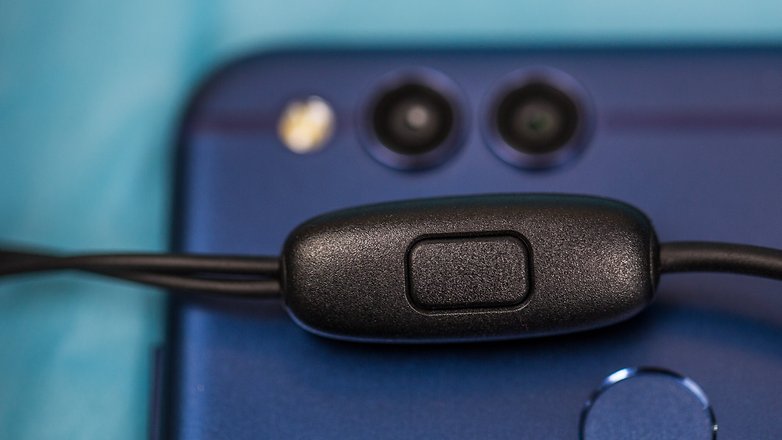
Practical: a headset with a button also serves as a cable remote release. / © NextPit
5. No manual mode – what now?
Is that all too complicated for you? Or the manual mode only allows very short shutter speeds? Then modes with names like “light trails”, “long exposure” or the like help. Just browse through the camera app on your smartphone to see which options are available to you.
With the Google Pixel 6 and Pixel 6 Pro, for example, you will find the long exposure option in so-called motion mode. And with many current iPhones you can simply select the option “Long Exposure” in the gallery at the top left instead of “Live” in order to turn the short video into a stabilized long term exposure.
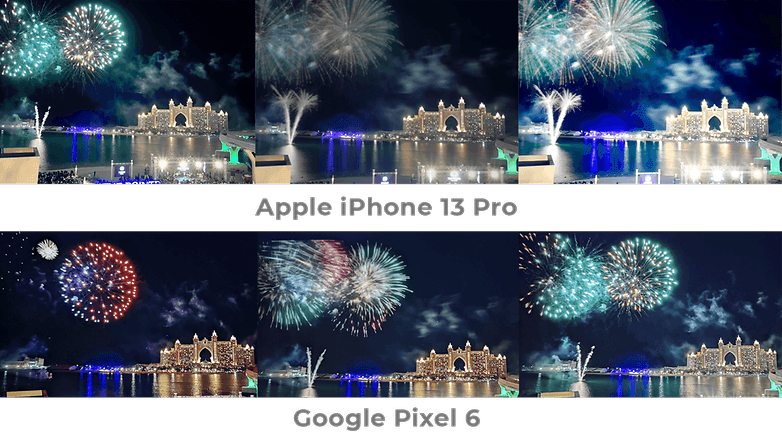
With the iPhone 13 Pro, we first converted the live photo (top left) into a long exposure (center) and then worked it out with the on-board tools (right). With the Pixel 6 Pro you can see a standard photo (bottom left) and a long exposure (center) in comparison. The night mode is still used on the right, but despite the longer exposure time it does not leave any nice traces of light. / © NextPit
Unfortunately, at the time of this article’s editorial deadline, we didn’t have any large fireworks on hand. However, the results with both the iPhone 13 Pro and the Pixel 6 were rather mediocre when we photographed fireworks videos in the darkened room.
And otherwise?
Incidentally, the tips mentioned above are not only suitable for photographing fireworks, but also, for example, for light painting or to transform cars driving past into long trails of light in a city photo. And I’m sure you will find other scenarios too!
If you have any further tips for fireworks photos or any kind of feedback, then I look forward to your comments. Otherwise all I can say is: Have fun with the New Year’s Eve fireworks, watch your fins and have a good start into the New Year!
